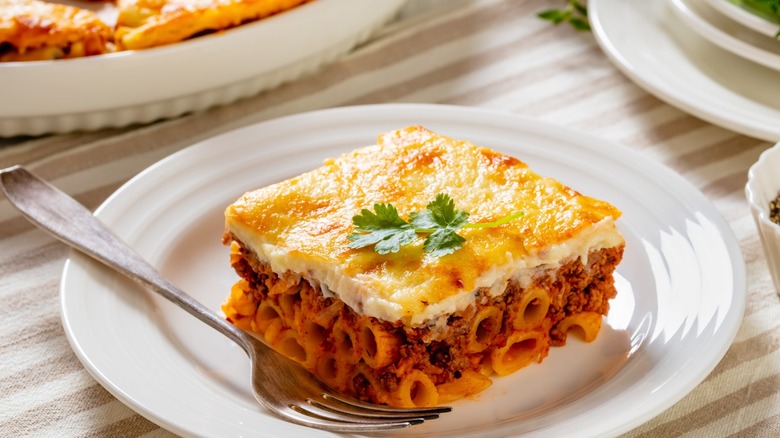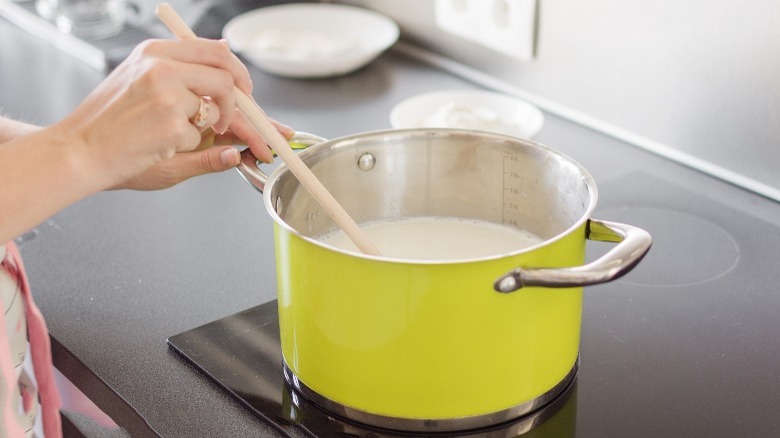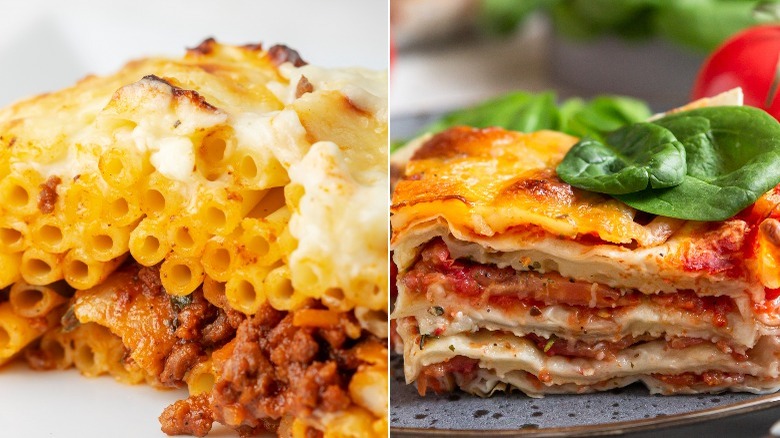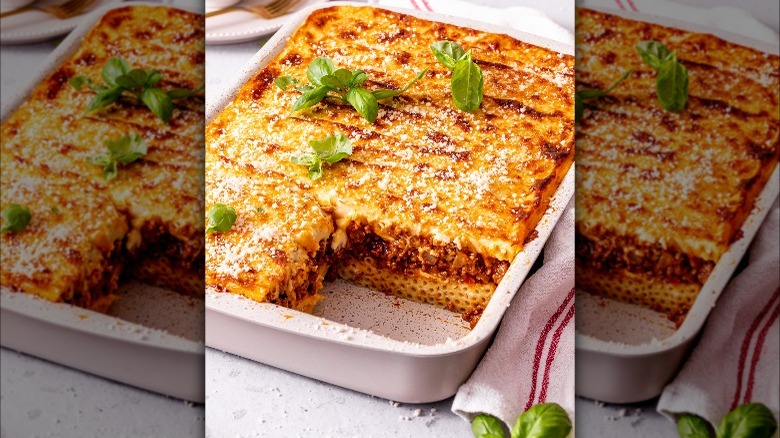Greek Pastitsio Is The Lasagna Cousin You Need To Know About
Pastitsio is a popular Greek layered dish made of pasta, bechamel sauce, and meat sauce. Its name comes from the Italian dish "pasticcio," a baked pie that usually featured pasta and meat. The pie's ingredients often varied by region. The modern version of this dish dates back to the 1920s, thanks to the efforts of Greek chef Nikolaos Tselementes. Tselementes, born on the Greek island of Sifnos in 1878, spent time in Europe where he studied cooking. He became a professional chef and went on to publish the highly influential work "Cooking and Patisserie Guide" in 1920, which included a version of pastitsio that mirrors present-day preparations.
His name has become synonymous with cooking in Greece. In fact, a slight shortening of his last name –- tselemente –- is often used as a word for cookbook. And it was his passion for French food that led to European influences becoming part of Greek cuisine. Tselementes is probably responsible for the addition of béchamel sauce, which is a classic French sauce, to pastitsio.
How pastitsio is made
Making this rich and hearty dish involves a lot of steps, but it's definitely worth the effort. At the heart of pastitsio are two different sauces: a tomato-meat sauce and a béchamel sauce. Ground beef is usually the meat of choice for the sauce, but some prefer lamb. Other key components of this sauce are tomatoes, onions, spices, and wine. The béchamel sauce is one of the five mother sauces of French cooking. It consists primarily of flour, butter, and milk. And while the ingredients seem simple, making a good béchamel sauce is a labor of love. It requires time, patience, and a fair amount of stirring to pull off a smooth and creamy sauce.
Pasta is another key element of pastitsio, and it's important to use the right shape for this dish. In Greece, and possibly online, there's a special pasta for this purpose called pastitsio, which is a long and hollow tube. But more readily available styles, such as penne or ziti, should work just as well. Once all the separate elements are prepared, it's time to build the dish. In a baking dish, layer the pasta, the meat sauce, and the béchamel sauce. Grated Greek cheese, such as kasseri or kefalotyri, is added on top (and sometimes inside as well) before the dish is baked in the oven.
Pastitsio vs. lasagna
At first glance, pastitsio looks a lot like a classic lasagna bolognese with its layers of pasta, sauces, meat, and cheese. This similarity may explain why the dish is sometimes referred to as Greek lasagna. Béchamel sauce is also a leading part of both of these meals.
While pastitsio and lasagna share many of the same attributes, there are some notable differences between these two dishes as well. One of the most obvious variations is in the choice of pasta. Lasagna features thin sheets of pasta while pastitsio relies on tube-shaped noodles. The cheese also differs, reflecting their country of origin. Italian cheeses, such as ricotta, parmesan, and mozzarella, are found in lasagna. Pastitsio uses Greek cheese, such as the aforementioned kasseri and kefalotyri.
While each dish has a tomato sauce component, the spices used in these sauces differ as well based on local cuisine. You often find cinnamon in the meat sauce for pastitsio, but not in lasagna. Lasagna is most commonly seasoned with basil. Though both sides may include oregano, an herb found in both country's foods.
What does pastitsio taste like?
Pastitsio is the ultimate comfort food, thanks to its hearty meat sauce and creamy Béchamel sauce. The two sauces provide complimentary and yet contrasting flavors. Béchamel sauce is known for its mild and buttery creaminess; it's usually only seasoned with a touch of nutmeg or pepper and possibly a bay leaf. For the meat sauce, onions are sautéed and then cooked with ground beef. The tomatoes added to this mixture provide some brightness and acidity. The use of cinnamon adds a warmth and richness to the sauce as well.
There's the power of cheese contributing to the flavor of pastitsio. Kefalotyri cheese, which is often recommended for this dish, is a sharp, hard cheese made from either goat's or sheep's milk (sometimes both). Another popular cheese choice for this dish is kasseri, which is softer than kefalotyri. This cheese is sometimes compared to mozzarella, but it has a sharper, salty taste than that Italian classic. The noodles on the bottom of the pastitsio add a bit of chew and texture to this otherwise saucy dish. So when you take a forkful of pastitsio, you get the creaminess of the Béchamel sauce, the earthy richness of the meat sauce, and the sharpness of the cheese, all of which enriches and seasons the pasta.



